EDIT: I chopped off the beginning to get right to the point:
I chopped real natural live rock up for aquascaping about 10 years ago.
I saw a lot of (dying) life on the surface of the rock: sponges, algae, tiny bivalves, tiny worms and other tiny squiggly things were on the rock. I guess all that stuff on the surface was why it was called 'liverock'. But then I thought, why isn't a rock covered in algae from a pond called "liverock" as well? There's life on it too, I suppose.
2 firm taps with the chisel. It didn't seem very dense. Lo and behold, I saw the difference. I expected to see solid smooth rock within the liverock. Instead, there was texture: tiny micro-sized bumps and holes. It almost looked like a solidified sponge filled with wet, solidified sand. I poked at the rock and it slightly collapsed inward from my fingertips. It was almost "mushy" to a tiny degree. Hard to describe. The innards of the rock were mostly a very uniform white, off-white or pale yellow in color, except for the gradual darkening in the hue of yellow the deeper you progressed.
Before I was able to find a magnifying glass, within 30 seconds of the incident, I noticed the the entire newly exposed cross-section slowly turn into whitish grey and black. I didn't know why it was happening. Was it a chemical reaction? I hypothesized that micro organisms such as bacteria were dying or affected by the sudden exposure to the light or the air (oxygen?). It was literally within 30 seconds.
I assumed (as a reefer-chemist/reefer biologist; i.e. NOT a chemist. NOT a biologist), those areas that changed color within the rock were anoxic zones. Could they have been filled with obligate anaerobic bacteria and other organisms that perished when exposed to air? Can any real scientists here chime in? (*ahem @Randy Holmes-Farley ) Or was it an inorganic chemical reaction with the minerals and the newly exposed air?

Eventually, that entire newly exposed cross-section turned completely blackish grey, with tiny white and grey flecks throughout. The upper right looks light grey or white, but its not. That's from the glare.
What was interesting was the thin uniform border, only millimeters beneath the surface, all around the perimeter of the new cross-section. It retained the same, pale yellow color that the inside of the liverock once was.
Photo below of another real liverock I chopped.
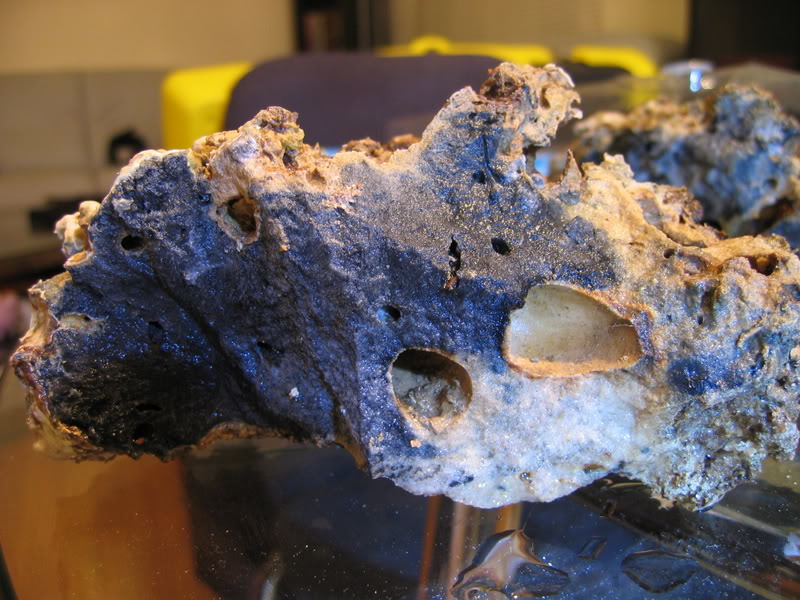
I was curious to see the innards of manmade rock from Marco a few years later, when they started popping up. When I broke one with a chisel, It was much more dense. Once it cracked open, a puff of white powder exploded in my face. Looking at the cross-section of the marco rocks, I saw that it was completely solid and smooth. I wish I took a photo of the chopped manmade Marco rock. But I was too blind. In the middle of the rock, I saw what exploded the white puff-bomb in my face. There was a giant air pocket bubble and bits of whitish powder left, which I assumed was uncured/unbaked cement or aragonite or whatever it was made of. There are no anaerobic capabilities in modern day manmade rocks. Even the Florida aquacultured rocks from Tampa bay is superficially covered with life. But I chopped one in half, and it was just solid rock. I think those rocks are mined from the land and dropped into the ocean.
It would be interesting to manufacture "liverock 2.0" using the same materials and goals as the Bio NO Bricks by brightwell or other manufacturers for true denitrification. Just shape the bricks into the shapes of liverock. Liverock needs true denitrification capabilities!
I guess the erosion rate of the bricks is a concern. It completely erodes within a few years. My 20+ year old natural liverock has eroded by approximately 20%. Some of those rocks were even bigger 20 years ago than the photos show. The photos below the current tank are about 10 years old. A big chunk of the main pile of liverock in the middle left is one giant 70+ lbs fiji liverock. or it was 70lbs once. heh. The most obvious erosion comparison is the lone island to the right. That one is about 15 years old from marshall island or vanautu ( I think)
The top 2 photos are my little reefing world currently transplanted to the Reefer350 (They will have to be transplanted again soon due to a silicone failure in the Reefer.)
The bottom 2 photos are a little over 10 years ago. (I think):
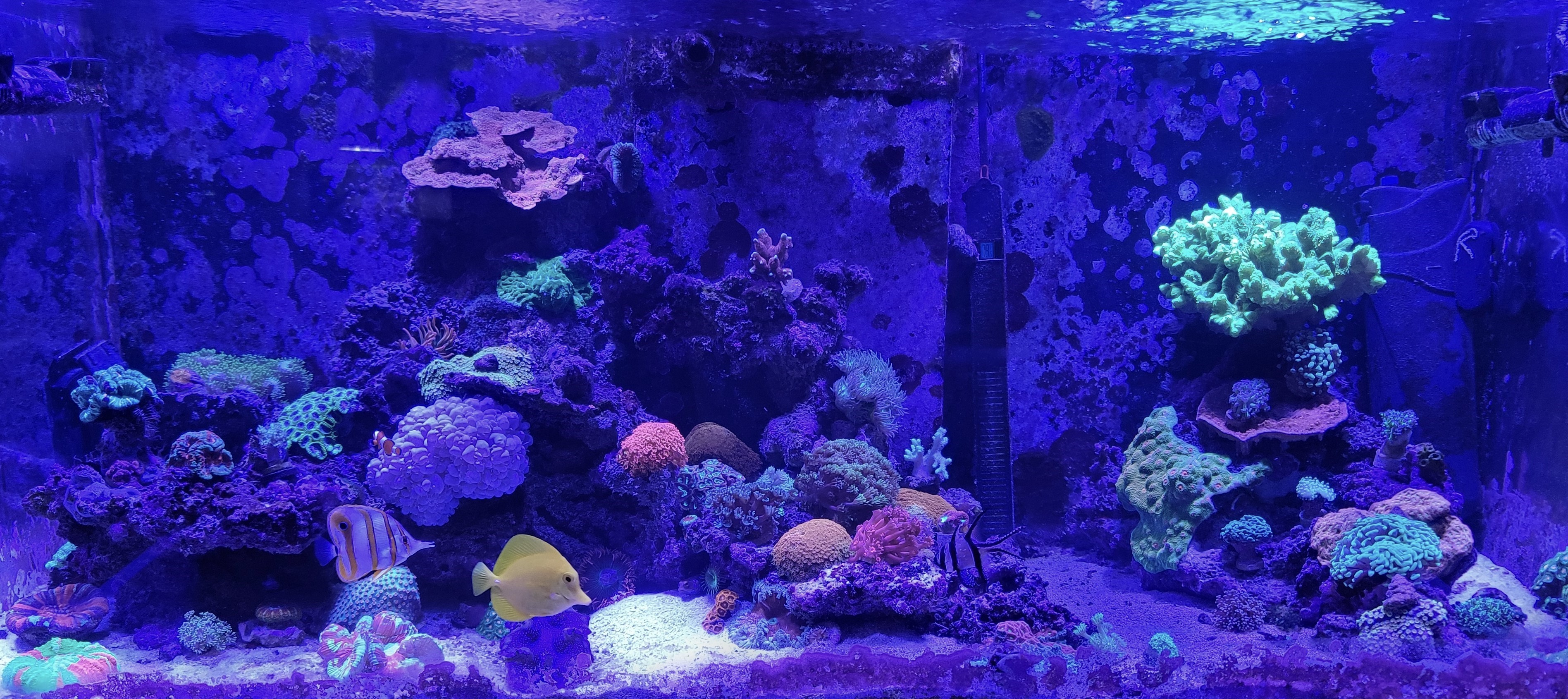
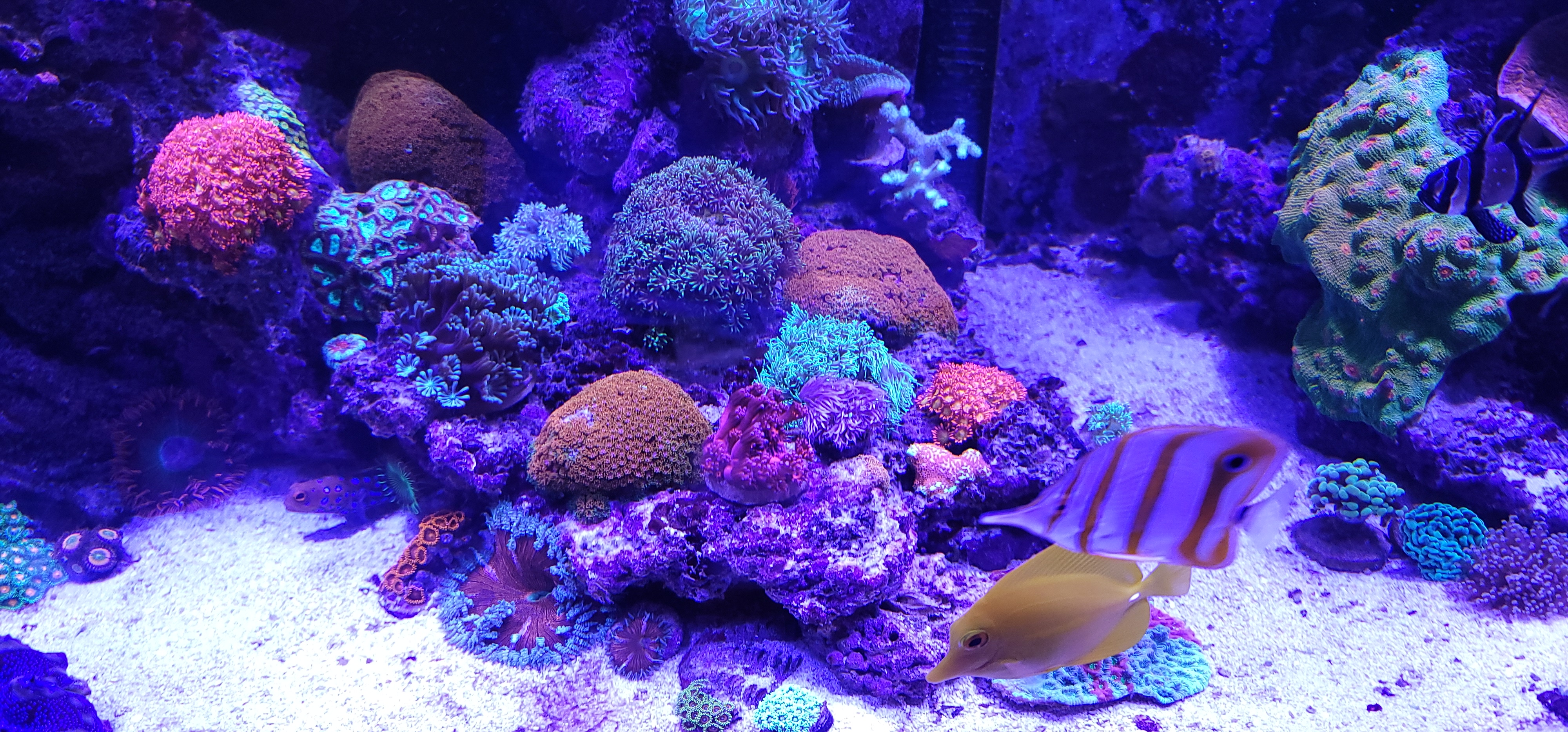
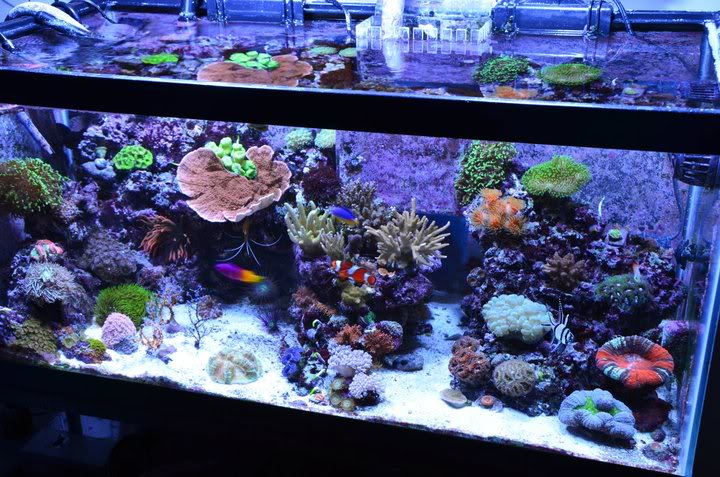
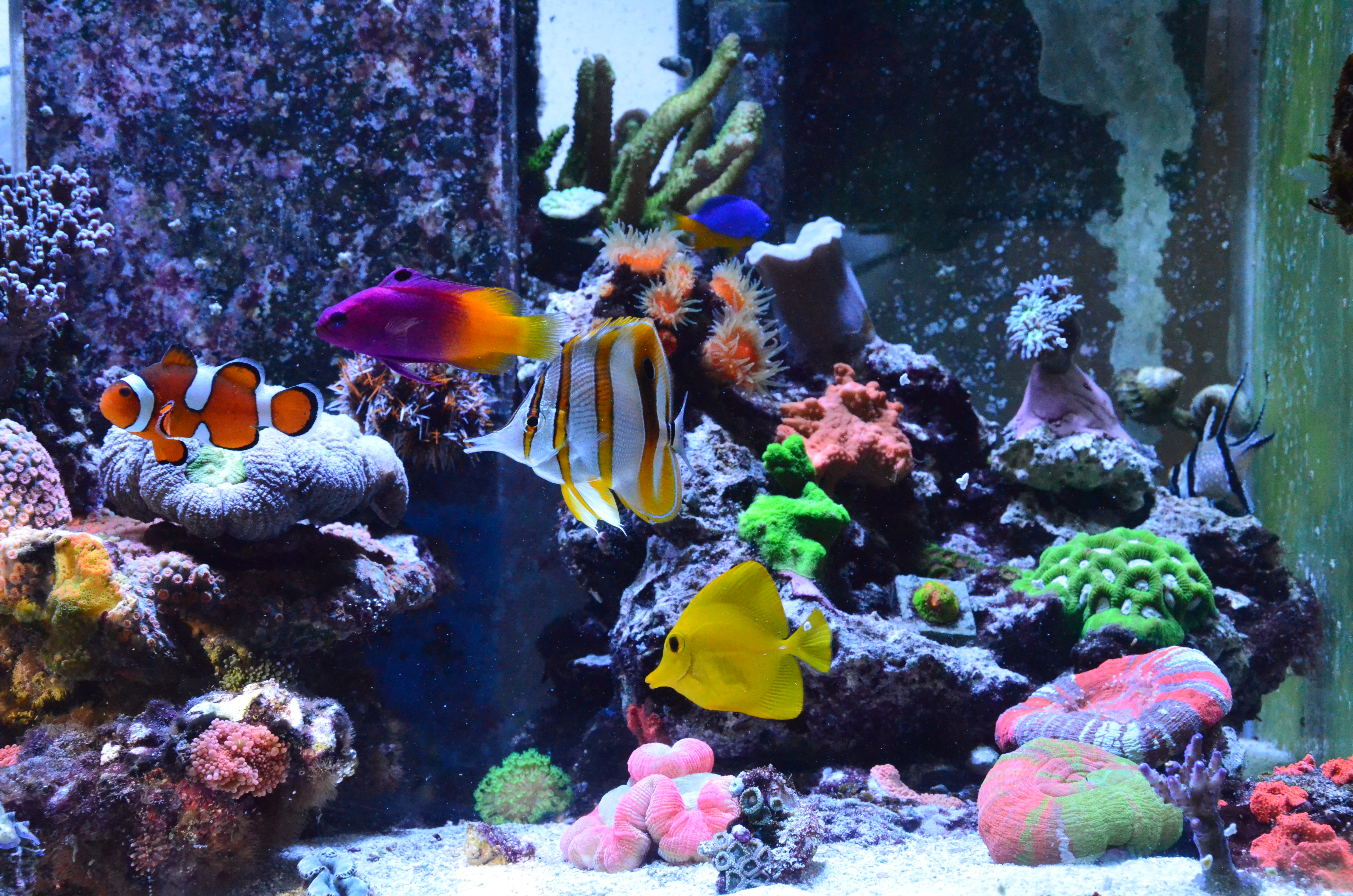
Here's a video almost 10 years years ago. Compare the sizes of the rocks to now!
Video of tank 2013
Anyway, the takeaway from all this is:
If you can, go to your local reef LFS and see if their liverock bins have any old, natural liverock from tanks that were taken down by reefers. Some natural liverock might actually be just a real solid mineral rock, simply encrusted with calcified skeletons of old corals on the surface. But even if there still exists layers of calcified coral skeletons, there might be facultative or obligate anaerobic bacteria on it. (Any biologists care to chime in? I'm merely a wanna-be-reefer-biologist )
)
But if you are lucky, you just might find the diamond: Real liverock that has similar properties to what I described above. Real 'top-shelf' liverock in my opinion are rocks centuries old, with layers and layers of old calcified skeletons leading to natural porosity deep inside the rock with interconnected 'cells'. This is where the anaerobic bacteria live. Heterotrophic and autotrophic bacteria start from the surface and slightly into the liverock. But as you go deeper and deeper, even though the gases can travel between these microscopic holes, as aerobic autotrophs and heterotrophs utilize the oxygen, eventually deeper down there is no more oxygen. And that is where the homes of our friends, the autotrophic anaerobic bacteria live. These are one of the most important bacteria in liverock as well as your entire reeftank. They are fragile and I believe most of them will die when exposed to oxygen. So please take care of them and take care of the rare natural live rock that you might find one day or have had for a long time.
A tank with only modern day manmade rock will never have true denitrification. I guess without natural liverock, there needs to be another export method of nitrate. Lots of more water changes, a refugium with a lot of macro algae, an algae scrubber, a big protein skimmer to reduce the breakdown of organics which will eventually lead to nitrate, or other denitrification gadget/technology. Definately a few of those brightwell NO Blocks you put in the sump.
I choose a natural liverock, not only for the biodiversity, but because true liverock comes from our motherland: The reefs of the ocean!
I chopped real natural live rock up for aquascaping about 10 years ago.
I saw a lot of (dying) life on the surface of the rock: sponges, algae, tiny bivalves, tiny worms and other tiny squiggly things were on the rock. I guess all that stuff on the surface was why it was called 'liverock'. But then I thought, why isn't a rock covered in algae from a pond called "liverock" as well? There's life on it too, I suppose.
2 firm taps with the chisel. It didn't seem very dense. Lo and behold, I saw the difference. I expected to see solid smooth rock within the liverock. Instead, there was texture: tiny micro-sized bumps and holes. It almost looked like a solidified sponge filled with wet, solidified sand. I poked at the rock and it slightly collapsed inward from my fingertips. It was almost "mushy" to a tiny degree. Hard to describe. The innards of the rock were mostly a very uniform white, off-white or pale yellow in color, except for the gradual darkening in the hue of yellow the deeper you progressed.
Before I was able to find a magnifying glass, within 30 seconds of the incident, I noticed the the entire newly exposed cross-section slowly turn into whitish grey and black. I didn't know why it was happening. Was it a chemical reaction? I hypothesized that micro organisms such as bacteria were dying or affected by the sudden exposure to the light or the air (oxygen?). It was literally within 30 seconds.
I assumed (as a reefer-chemist/reefer biologist; i.e. NOT a chemist. NOT a biologist), those areas that changed color within the rock were anoxic zones. Could they have been filled with obligate anaerobic bacteria and other organisms that perished when exposed to air? Can any real scientists here chime in? (*ahem @Randy Holmes-Farley ) Or was it an inorganic chemical reaction with the minerals and the newly exposed air?
Eventually, that entire newly exposed cross-section turned completely blackish grey, with tiny white and grey flecks throughout. The upper right looks light grey or white, but its not. That's from the glare.
What was interesting was the thin uniform border, only millimeters beneath the surface, all around the perimeter of the new cross-section. It retained the same, pale yellow color that the inside of the liverock once was.
Photo below of another real liverock I chopped.

I was curious to see the innards of manmade rock from Marco a few years later, when they started popping up. When I broke one with a chisel, It was much more dense. Once it cracked open, a puff of white powder exploded in my face. Looking at the cross-section of the marco rocks, I saw that it was completely solid and smooth. I wish I took a photo of the chopped manmade Marco rock. But I was too blind. In the middle of the rock, I saw what exploded the white puff-bomb in my face. There was a giant air pocket bubble and bits of whitish powder left, which I assumed was uncured/unbaked cement or aragonite or whatever it was made of. There are no anaerobic capabilities in modern day manmade rocks. Even the Florida aquacultured rocks from Tampa bay is superficially covered with life. But I chopped one in half, and it was just solid rock. I think those rocks are mined from the land and dropped into the ocean.
It would be interesting to manufacture "liverock 2.0" using the same materials and goals as the Bio NO Bricks by brightwell or other manufacturers for true denitrification. Just shape the bricks into the shapes of liverock. Liverock needs true denitrification capabilities!
I guess the erosion rate of the bricks is a concern. It completely erodes within a few years. My 20+ year old natural liverock has eroded by approximately 20%. Some of those rocks were even bigger 20 years ago than the photos show. The photos below the current tank are about 10 years old. A big chunk of the main pile of liverock in the middle left is one giant 70+ lbs fiji liverock. or it was 70lbs once. heh. The most obvious erosion comparison is the lone island to the right. That one is about 15 years old from marshall island or vanautu ( I think)
The top 2 photos are my little reefing world currently transplanted to the Reefer350 (They will have to be transplanted again soon due to a silicone failure in the Reefer.)
The bottom 2 photos are a little over 10 years ago. (I think):




Here's a video almost 10 years years ago. Compare the sizes of the rocks to now!
Video of tank 2013
Anyway, the takeaway from all this is:
If you can, go to your local reef LFS and see if their liverock bins have any old, natural liverock from tanks that were taken down by reefers. Some natural liverock might actually be just a real solid mineral rock, simply encrusted with calcified skeletons of old corals on the surface. But even if there still exists layers of calcified coral skeletons, there might be facultative or obligate anaerobic bacteria on it. (Any biologists care to chime in? I'm merely a wanna-be-reefer-biologist
But if you are lucky, you just might find the diamond: Real liverock that has similar properties to what I described above. Real 'top-shelf' liverock in my opinion are rocks centuries old, with layers and layers of old calcified skeletons leading to natural porosity deep inside the rock with interconnected 'cells'. This is where the anaerobic bacteria live. Heterotrophic and autotrophic bacteria start from the surface and slightly into the liverock. But as you go deeper and deeper, even though the gases can travel between these microscopic holes, as aerobic autotrophs and heterotrophs utilize the oxygen, eventually deeper down there is no more oxygen. And that is where the homes of our friends, the autotrophic anaerobic bacteria live. These are one of the most important bacteria in liverock as well as your entire reeftank. They are fragile and I believe most of them will die when exposed to oxygen. So please take care of them and take care of the rare natural live rock that you might find one day or have had for a long time.
A tank with only modern day manmade rock will never have true denitrification. I guess without natural liverock, there needs to be another export method of nitrate. Lots of more water changes, a refugium with a lot of macro algae, an algae scrubber, a big protein skimmer to reduce the breakdown of organics which will eventually lead to nitrate, or other denitrification gadget/technology. Definately a few of those brightwell NO Blocks you put in the sump.
I choose a natural liverock, not only for the biodiversity, but because true liverock comes from our motherland: The reefs of the ocean!
Last edited:


















